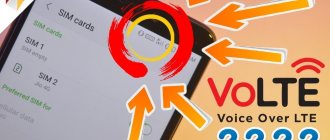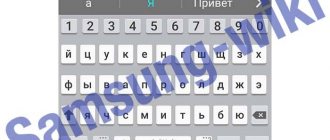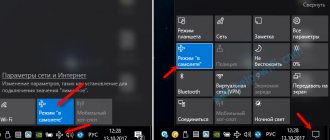Many users probably still remember those “ancient” times when there were very few devices that were charged through the USB ports of computers or laptops. For most, it was only an iPod (well, or another similar player).
A little later, it was already possible to charge some smartphones via USB. But now “some” have turned into “all”, plus all sorts of 3G routers, fitness trackers, portable speakers and a lot of other gadgets have been added to them, each of which literally cannot live without regular connections to USB.
But despite the entire Windows 10 coming into the world, the old problem with USB remains the same: as soon as the computer or laptop turns off or goes into sleep mode, its USB ports also stop “providing current” and no longer charge anything. True, Windows laptops have been produced before and are now being produced, in which USB ports continue to function in sleep mode, but, as practice shows, not all users know about them.
Therefore, the majority of users, continuing to practice the “old-fashioned” method of charging via USB, simply leave their computers turned on every time they need to charge a smartphone or some other mobile device. The method, of course, is time-tested and effective, but, unfortunately, not the most convenient and very wasteful in terms of energy consumption (including the energy that has to be pulled from the laptop battery in such cases).
In this regard, we remind you how to charge mobile electronics through the USB port of a turned off Windows computer, or more precisely, how to configure your computer so that it supplies energy to its USB ports in sleep mode.
And before setting anything up, we make sure to conduct a mini-inspection of the available USB ports to make sure that among them there are those that are configured to operate in charger mode when the computer is turned off. If your computer (more precisely, the motherboard) has such a function, then the manufacturer of the machine should have painted these so-called charge-friendly USB in a noticeable yellow color.
And to change the power settings of the USB port, go to “ Device Manager”
" and there - in the section "
USB Controllers
".
In the list that opens, find the line “ Root USB con” and click
OK .
Now, even when the computer is turned off, you can charge various mobile devices via this USB. If one is not enough, then try connecting the second (if you have one). But it is quite possible that you will have to limit yourself to only one, since this method cannot enable the charger mode for all USBs at once. Moreover, sometimes the USB charging option may not be activated when the computer is turned off (I won’t go into detail about why this happens). But the described method most often works.
Nowadays, RuleSmart visitors often ask questions like this, like how to enable fast charging on a smartphone. Of course, there are those who want to turn it off. In both cases, it all looks quite interesting, if not comical. First, let's figure out what's what. Fast charging technology allows you to increase the speed of filling the battery capacity, often by multiples. This technology is relevant, at least, for batteries with a capacity of over 3000 mAh. Everything below does not make sense; you can use 1A there.
Which smartphones support fast charging?
There is no single standard, so many smartphone manufacturers have developed their own rules. Let's figure out what standards exist and which phones support them.
Quick Charge
Quick Charge technology developed by Qualcomm is the most successful. There are four versions of this standard. New memory devices of the latest versions - 4.0/4.0+ develop output power up to 27 W. Thanks to this, they can charge the battery in 15 minutes from 0 to 50%.
It is impossible to list smartphone models that support this standard, since there are many of them. Therefore, to find out whether a phone supports this technology, you need to understand each specific model. When determining compatibility, it is useful to know that Quick Charge can only work with gadgets equipped with Qualcomm processors. Gadgets that support this format are backwards compatible.
Here is a list of smartphones that support the latest Quick Charge 4+ standard:
- Black Shark 2;
- BQ Aquaris X2? X2 Pro;
- Nubia mini, Z17 and Z18;
- Razer Phone;
- Redmi K20, K20 Pro;
- Samsung Galaxy A70 and A80;
- Xiaomi Mi 8, Mi9, A2, MIX3, Poco F1;
- ZTE AXON Pro 9 and 10.
Apple
Apple has also developed its own technology. Gadgets that support it can receive up to 29 W of power from the charger. Thanks to this, the iPhone is charged from 0 to 50% in 30 minutes.
The following gadget models support the Apple standard:
- iPhone 8 and later models;
- the first generation of iPad Pro with a screen of 11 and 12.9 inches, as well as new versions of these gadgets;
- third generation iPad Air;
- fifth generation iPad mini.
Samsung Adaptive Fast Charging
The power that Adaptive Fast Charging can show is 18 watts. This is enough to charge the Galaxy Note 5 smartphone, equipped with a 3000 mAh battery, up to 50%. It will take two hours to completely fill the same battery. You can use a Qualcomm Quick Charge 2.0 adapter, but in this case the replenishment of energy will be slower.
This technology is supported by all Samsung S series smartphones, starting with the Galaxy S6, as well as Note devices, starting with the Galaxy Note 4.
Motorola TurboPower (Lenovo)
The Motorola TurboPower standard is based on Quick Charge 2.0 technology. The difference between TurboPower is the increased power of 28.5 W. It is supported by smartphones Moto X Pure Edition, Droid Turbo 2 and later versions of gadgets produced under the Motorola brand.
Media Tek Pump Express
Pump Express technology was developed by Media Tek and is considered the closest rival to the previous one. The latest version of Media Tek Pump Express 4.0 differs from competitors in that the battery is replenished with energy directly and does not involve the controller. Operating modes and battery temperature are controlled by the memory.
For a smartphone to support Pump Express, it must be equipped with a USB Type-C port. Information about gadget compatibility with this standard must be checked for each specific model. Compatible models should be found among phones using the Media Tek chipset.
VOOC Flash Charging
The power that VOOC Flash Charging can provide is 25 W. This is enough to replenish a 3000 mAh battery up to 75% in 30 minutes. The following smartphones support this technology:
- OPPO A1, A3, A7x, A73s, A83, A9, A91;
- OPPO F7, F9, F11;
- OPPO R15, R17;
- OPPO Reno A, Z, 10xZoom, 5G;
- OPPO Reno 2, Reno 2F, Reno 2Z;
- OnePlus 3, 5, 6, 7;
- Realme 3 Pro, 5 Pro, Q, X2, X50 5G;
Huawei SuperCharge
Huawei SuperCharge technology can provide power up to 25W.
This will be enough to charge a 4000 mAh battery in thirty minutes to 57%. The following phones are capable of working with this technology:
- Huawei nova 2, 2s, 2 plus, 3, 4, 4e, 5i Pro, 5z, P9, P9 Plus, P10 Lite, P10 Plus, P20 lite, P20 lite (2019), P30 lite, Mate 8, Mate 9, 9 Pro, 9 Porsche Design, Mate 10, 10 Pro, 10 Porsche Design, Mate 20, 20 X, Mate RS Porsche Design, Mate 20 lite;
- P10 Plus, P20 lite, P20 lite (2019), P30 lite, Mate 8, Mate 9, 9 Pr, 20S, Holly 2 Plus, Play, HONOR Note 10, HONOR View, HONOR View 10, HONOR View 20;
Samsung Fast Charging: Quick Charge Compatible
Samsung Adaptive Fast Charging is compatible with any charger that is Quick Charge certified. This means that you can safely charge your phone with an adapter that says Quick Charge 2.0 or Quick Charge 3.0.
It should be borne in mind that in any case, the phone will be charged using Adaptive Fast Charging technology, which is based on QC 2.0. Current parameters (voltage, current, power) will change in steps rather than smoothly. The charging speed is not optimal, but Galaxy smartphones still charge fairly quickly.
Adaptive Fast Charging: Compatible with other technologies
Today, there are a lot of alternative fast charging technologies developed by phone manufacturers. For example, Huawei uses Super Charge in its phones, OnePlus smartphones are charged with a Dash Charge adapter, and Lenovo offers its own Turbo Power technology.
Is it possible to charge Samsung Galaxy with non-native devices for fast charging? The question is complex, when answering it you need to take into account the specific features of a particular technology.
Huawei's Super Charge Since the fast charging controller is located in the phone and not in the charger, Super Charge technology will not work with a Samsung phone. In practice, you can charge the phone, but the speed will be normal.
Turbo Power is a technology based on Qualcomm's Quick Charge, so it's compatible with Samsung phones, as is Adaptive Fast Charging backwards compatible with Lenovo phones.
OnePlus' Dash Charge technology In theory, a device connected to the Type-C port (that is, a phone) is not in danger, but it’s better not to take risks. The power circuits in Dash Charge are partially located in the adapter, and who knows what the Chinese soldered there.
Read more about the technology : Dash Charge for OnePlus: why are 4 amps dangerous?
VOOC and SuperVOOC for Oppo smartphones are essentially the same Dash Charge, only for a different subsidiary brand of the Chinese company BBK Electronics. The technology was created in violation of USB Type-C standards, so we do not recommend using VOOC chargers with other phones. Just as we do not recommend connecting branded VOOC cables to laptops, USB hubs or other power supplies.
How to enable Samsung fast charging?
Some users are afraid to charge their phone using fast charging technology. They've heard about reduced battery life and the risk of the device overheating. Plus, the events with the Galaxy Note 7 with flammable batteries are still fresh in my memory.
If you want to enable or disable fast charging, Samsung allows you to do this at the operating system level. Note that not all manufacturers implement this feature at the software level, so the Koreans are great in this regard. Below we provide a step-by-step guide on how to do this.
How to disable fast charging Samsung
1. Lower the top curtain, click on the gears and go to the Settings section. Or go to Settings in the way that you find more convenient.
2. In settings, click on the “Optimization” menu item.
3. On the Optimization tab, in the lower left corner, find the “Battery” icon. Click.
4. In the “Battery” section, click on the three dots in the upper right corner and open “Advanced settings”.
5. In additional settings, turn on or off the switch opposite fast charging.
Turned it on - and the phone is charged using Samsung Adaptive Fast Charging technology. Turn it off and your Samsung Galaxy charges at normal speed.
How fast charging works
To quickly charge the battery, more power will be required from the charger. Standard chargers have an output voltage of 5 V and a current of up to 2.5 A. In devices using fast charging technology, the voltage can reach 20 V and the current is 5 A. There are also special protocols by which the gadget notifies the charger about its status . And based on this, the parameters change.
When the battery is almost empty, the charger produces maximum power. Therefore, quickly charging the battery is most effective when it is low. It’s not for nothing that companies provide information about the time it takes to replenish a battery with energy up to 50%.
Which phones support BZ?
Huawei is constantly updating its line of smartphones. There is no point in listing all the models that have the Super Charge function, since there are many of them.
But if you decide to buy an outdated Huawei model or buy a device second-hand, then most likely there will be no knowledge base support.
The technology appeared relatively recently. But almost any new smartphone priced above the average price category will have this nice option. Before buying a smartphone, make sure that it has the necessary functionality. If you have already bought a phone and want to make sure whether this technology is present in it, you can find information about this on the box or in the model description on the Internet.
How to turn it on
Let's look at how to enable fast charging using the Samsung Galaxy as an example.
- open the “Settings” menu;
- select the line “Device Maintenance”;
- At the bottom left is the “Battery” button, click on it;
- in the new window at the top there is a “Settings” button, select it;
- To turn on the desired mode, move the switch in the “Fast charging” line.
If you have problems turning on the desired mode, you can use the menu search. To do this, enter the word “fast”.
How to use?
It is important to emphasize that the above steps are enough not to worry about a slowly charging tablet or phone. Re-activation of the function is not required, since it works automatically, without user intervention. To start the process, you will need to connect the cable to the device and insert the plug into the outlet. As a result, the gadget will charge at an accelerated rate.
To disable the technology, you will have to use the instructions above. That is, for the function to stop working, you need to open the “battery” section in the settings and move the slider to the “off” position. After this, the device will charge at standard speed.
How to disable
You can enable and disable fast charging in one menu item using the switch slider, as shown in the previous example. However, not all smartphones have the ability to disable this function. How to disable the fast charging function in this case?
There are two exits:
- The first is to update the phone's firmware with a new one; there is a possibility that such a function will appear when updating the software.
- The second is to charge the gadget with a charger that does not support fast charging (type 5V 2A).
Why does the knowledge base not work?
The device officially supports the technology, but has it stopped working or not working at all?
- Check the power adapter. The complete unit does not always support QC. The branded charger must have special markings. The technology used in the charger must match that of the phone.
- Replace the cable. Each USB cable has a cross-sectional indicator; it determines the maximum current that can be passed through it. If this parameter is too low, the device may refuse to work with it. When there was QC, but disappeared over time, check the cable for damage.
- Update your software. A system update helps solve minor bugs of the previous version and opens previously unavailable functions. For example, on the outdated Xiaomi Redmi 3S Prime, it was possible to activate the fast charging mode after installing the operating system update.
- Heat. If, while charging, the device is exposed to direct sunlight, the user is watching a video or playing on it, the power connector automatically turns off the QC to prevent the battery from overheating.
- Defect, firmware bug, damaged device. The function may not work due to a defective phone. If the user replaced the firmware or updated unsuccessfully, the selected custom does not support the knowledge base, and at the time of the update the device rebooted/turned off. Dropping the device on the ground or getting moisture inside may affect the operation of the power connector.
Check each of the listed points in turn. As a last resort, contact a service center for advice.
Is fast charging harmful for phones?
This technology practically does not harm the battery of a mobile phone. Such chargers can cause serious damage to the battery only if increased current is supplied throughout the entire charge cycle.
The technology for restoring battery capacity at an accelerated pace is programmed in such a way that when the battery reaches 70% charge, charging is transferred to normal operation.
The negative impact on the battery is not the use of this type of technology, but the frequent and incomplete restoration of the battery capacity. The battery is designed for a limited number of charge/discharge cycles, so if the gadget is connected to the adapter several times a day, then, naturally, the entire battery life will be used up within 1 year.
To prevent the battery from wearing out very quickly when using fast charging, it is recommended that after connecting the adapter, charge the battery to 100% or, better yet, 90-95%. In addition, it is not advisable to completely discharge the battery.
The charger should be connected when the charge level drops to 15 - 20%. Daily application of these simple rules will significantly increase the effective life of the battery when using wireless charging or in the fast capacity recovery mode.
Do you have any questions or something to add to the article? Then write to us about it in the comments. This will help make the material more complete and useful!
Huawei's flagships, presented in the spring of 2020, are impressive. Thus, the youngest in the series is the Huawei P20 Lite smartphone - according to the name, a slightly “stripped-down” version of the older flagship. The price for the “light” version of an advanced smartphone is two times lower than for a phone with the “Pro” prefix.










